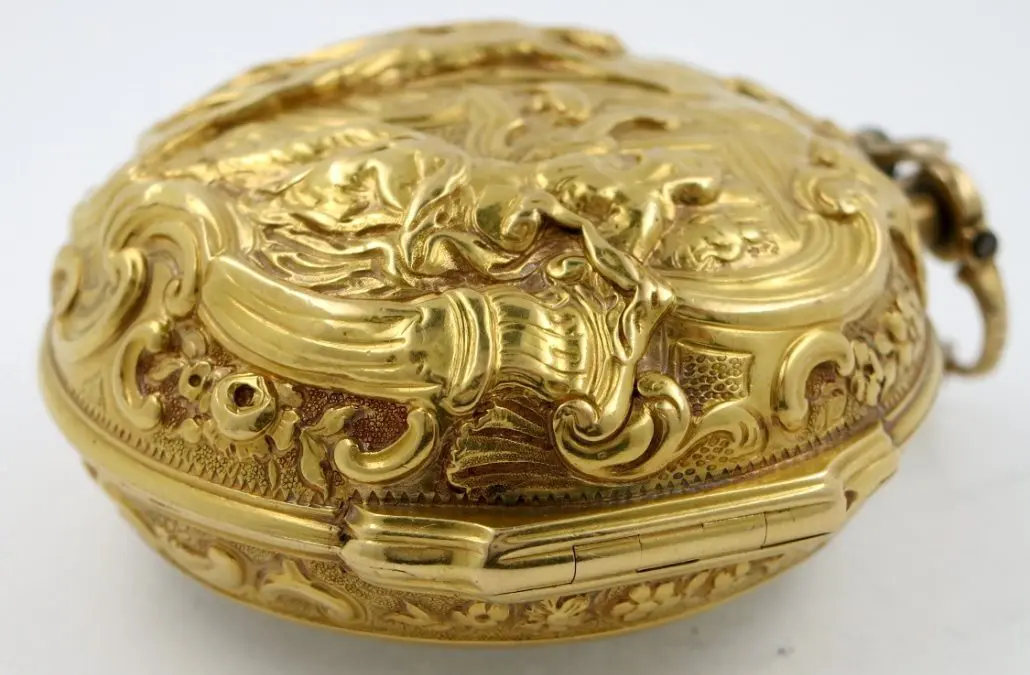Watch Museum Magazine
In the Watch Museum Magazine, embark on a fascinating journey into the art and engineering of timepieces. From the history of legendary watches and rare model showcases to care tips, valuations, and the latest horology news — it’s all here.
Important Factors to Consider When Buying an Antique Pocket Watch
Are you in the market for an antique pocket watch? The history and craftsmanship behind these timepieces make them a coveted addition to any collection. However, with so many factors to consider when purchasing an antique pocket watch, it can be overwhelming to know what to look for. In this blog...
Guide to Storing Antique Pocket Watches: Do’s and Don’ts
Antique pocket watches are not just functional timepieces, but also cultural artifacts that have a rich history. They can be valuable collectibles, and preserving them is essential to maintain their worth. In this guide, we will discuss the do's and don'ts of storing antique pocket watches, proper...
Appraising and Insuring Your Antique Pocket Watch
Antique pocket watches are more than just timekeeping devices – they are a piece of history that can tell a story about the past. Whether you've inherited an antique pocket watch or you're a collector yourself, it's important to understand the value and significance of these vintage timepieces. In...
The Future of Antique Pocket Watches: Trends and Collectors’ Market
Antique pocket watches are not just timepieces, they are also fascinating pieces of history. With unique designs and intricate complications, these watches have become highly sought after by collectors all over the world. In this blog post, we will explore the trends in the antique pocket watch...
Proper Cleaning Techniques for Antique Pocket Watches
Antique pocket watches are fascinating timepieces that have stood the test of time. These watches are not only valuable but also carry a lot of sentimental and historical significance. However, cleaning antique pocket watches is a delicate process that requires extra care to prevent damage. In...
The Delicate Process of Antique Pocket Watch Dial Restoration
If you are a collector of antique pocket watches, you know the beauty and craftsmanship of each timepiece. One important aspect of preserving your collection is to maintain the dial, which is often delicate and can be prone to damage. Restoring an enamel dial pocket watch requires careful...
Exploring Antique Repeating (Repeater) Pocket Watches
Antique pocket watches have long been cherished for their intricate designs, craftsmanship, and historical significance. But among all the different types of antique pocket watches, the repeating (or repeater) pocket watch stands out as a particularly fascinating and intricate example of this...
Evolution of Antique Pocket Watch Movements from 16th Century to 20th
Since their introduction in the 16th century, pocket watches have been a symbol of prestige and an essential accessory for the well-dressed gentleman. The evolution of the pocket watch was marked by many challenges, technological advancements and a thirst for accuracy. The movements of pocket...
Prominent Vintage Pocket Watch Brands / Makers of the 19th/20th Century
Pocket watches were once a staple accessory for men and women around the world. Before the advent of wristwatches, pocket watches were the go-to timepieces for many people. For hundreds of years, watchmakers have been creating intricate and beautiful pocket watches that have become treasured...
Exploring the antique enamel pocket watches
Antique enamel pocket watches are a testament to the craftsmanship of the past. These intricate pieces of art showcase the beauty and elegance of enamel, making them a prized possession for collectors. In this blog post, we will explore the history and design of antique enamel pocket watches, as...
Important Factors to Consider When Buying an Antique Pocket Watch
Are you in the market for an antique pocket watch? The history and craftsmanship behind these timepieces make them a coveted addition to any collection. However, with so many factors to consider...
Guide to Storing Antique Pocket Watches: Do’s and Don’ts
Antique pocket watches are not just functional timepieces, but also cultural artifacts that have a rich history. They can be valuable collectibles, and preserving them is essential to maintain their...
Appraising and Insuring Your Antique Pocket Watch
Antique pocket watches are more than just timekeeping devices – they are a piece of history that can tell a story about the past. Whether you've inherited an antique pocket watch or you're a...
The Future of Antique Pocket Watches: Trends and Collectors’ Market
Antique pocket watches are not just timepieces, they are also fascinating pieces of history. With unique designs and intricate complications, these watches have become highly sought after by...
Proper Cleaning Techniques for Antique Pocket Watches
Antique pocket watches are fascinating timepieces that have stood the test of time. These watches are not only valuable but also carry a lot of sentimental and historical significance. However,...
The Delicate Process of Antique Pocket Watch Dial Restoration
If you are a collector of antique pocket watches, you know the beauty and craftsmanship of each timepiece. One important aspect of preserving your collection is to maintain the dial, which is often...
Exploring Antique Repeating (Repeater) Pocket Watches
Antique pocket watches have long been cherished for their intricate designs, craftsmanship, and historical significance. But among all the different types of antique pocket watches, the repeating...
Evolution of Antique Pocket Watch Movements from 16th Century to 20th
Since their introduction in the 16th century, pocket watches have been a symbol of prestige and an essential accessory for the well-dressed gentleman. The evolution of the pocket watch was marked by...
Prominent Vintage Pocket Watch Brands / Makers of the 19th/20th Century
Pocket watches were once a staple accessory for men and women around the world. Before the advent of wristwatches, pocket watches were the go-to timepieces for many people. For hundreds of years,...
Exploring the antique enamel pocket watches
Antique enamel pocket watches are a testament to the craftsmanship of the past. These intricate pieces of art showcase the beauty and elegance of enamel, making them a prized possession for...

